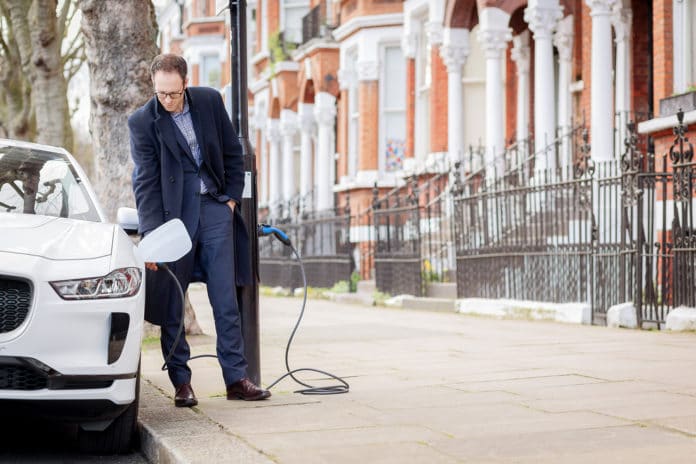The mobility of the future is still betting on electricity. The problem of a small number of charging points has been solved in Great Britain, where cars can be charged directly from street lamps.
Siemens has unveiled the first avenue in United Kingdom that has been fully converted to provide lamppost electric vehicle charging points and named ‘Electric Avenue, W9’. Siemens, in collaboration with ubitricity and Westminster City Council, has successfully converted 24 lampposts along Sutherland Avenue – which is more than half a mile long – into EV charge points using existing city infrastructure. Residents can now charge their electric cars at various locations along Sutherland Avenue in London. Two adjacent streets are expected to be completed in the coming weeks.
The project was initiated by some studies by Siemens, which showed that more than a third (36 percent) of British drivers planned to buy a hybrid or electric vehicle as their next car – with two out of five people (40 percent) saying that the lack of charging points prevented them from doing this earlier.
Siemens and ubitricity are therefore working together with the Westminster City Council to convert the street lamps into charging stations. Westminster City currently has more charging points than any other UK local authority. There are a total of 296 lantern charging points in the district, 24 of which are located on ‘Electric Avenue, W9’. It is planned to increase the number of charging stations in Westminster to 1,000 within the next year.
The ubitricity technology that is used in the conversions allows EVs to be charged overnight to a range of approximately 124-186 miles (200-300 km), depending on the battery charging system in the car. Hybrid cars can often be fully charged in about two to three hours.
“We know that half of London’s air pollution is caused by road transport and Westminster is a particularly busy area. While we cannot solve the challenge of air quality overnight, ‘Electric Avenue W9’ is an important showcase of what’s possible using existing city infrastructure. It illustrates how residential streets will look in the near future, and accelerates the shift to zero-emission vehicles,” said Cedrik Neike, CEO of Siemens Smart Infrastructure.
Using the existing infrastructure for charging points creates a simple and fast network, which is more developed at a lower cost than if it were necessary to recreate a clean network and specific charging points.
